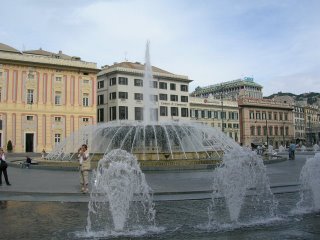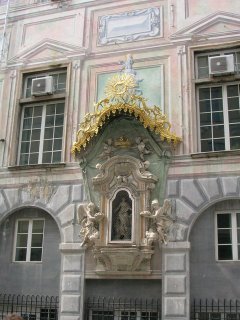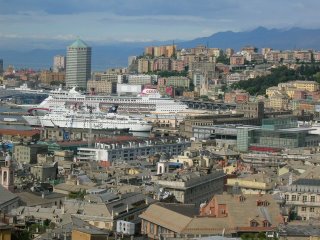
The origins of Genoa go back to pre-Roman age. In the year 205 B.C. it was then destroyed by them and rebuilt from the hill of S. Maria di Castello, the main point to control the sea harbour. After barbaric and saracenic invasions it reorganized its fleet and participated to the Crusades setting up colonies all over the Mediterranean sea. In the year 1162 it became an indipendent town and took possess of the 2 Rivieras. Successfully winnings along the sea made Genoa a wealthy and magnificent city. After the discovery of the Americas by Christopher Columbus and the loss of the colonies the town struggled mainly on land for its possessions all along Liguria. The Republic was annexed to France in 1805 and after 1814 Genoa and Liguria became united under the Kingdom of Sardinia. The town was then on the front line, - with men like Garibaldi and Mazzini - to fight for the unification of Italy. Genoa had with its harbour and the inland an important role during the 2nd World War. History and the human events during the course of centuries left ineffaceable marks on Genoa. The city boasts an architectural, artistic, and cultural wealth of exceptional amplitude and value. It merges the singolar quality of its medieval nuclei with the industriousness of the port and different other activities and offering landscapes and natural panoramas of unsurpassed beauty. The Ligurians, ancestors of the Genoise people were here before the Romans. They where living from the land near the now Tuscany border, all through the actual Liguria and down to France. Genoa was one of the 4 ancient Sea Republics. Its power was so strong to arrive to lend money and ships even to the English crown. Part of the English flag (one of the crosses) is the Genoa flag, remembering ancient treaties regarding the use of our flag on ships in order to avoid conflicts with other nations as they were all frightened by the Genoa Ships. With the Industrial Revolution Genoa was for a long time one of the three major industrial cities in Italy. Genoa's harbour is the biggest in Italy and, alternatively by the years, the most important in the whole Mediterranenean area. Nowadays with the 2000 jubilee year Genoa is also one of the most important passage ways. For this occasion many old beautiful churches and buildings have been restored to allow all the interested tourists and modern pilgrims to know ancient and modern uses together with very interesting historical, religious and social aspetcs. The town - after its history - boasts today an architectural, artistic, cultural wealth and different other activities offering landscapes and natural panoramas together with the tipical regional cousine in many cases with historical and classical very interesting dishes wich recipes that dated back to ancient times but still very famous nowadays.




No comments:
Post a Comment